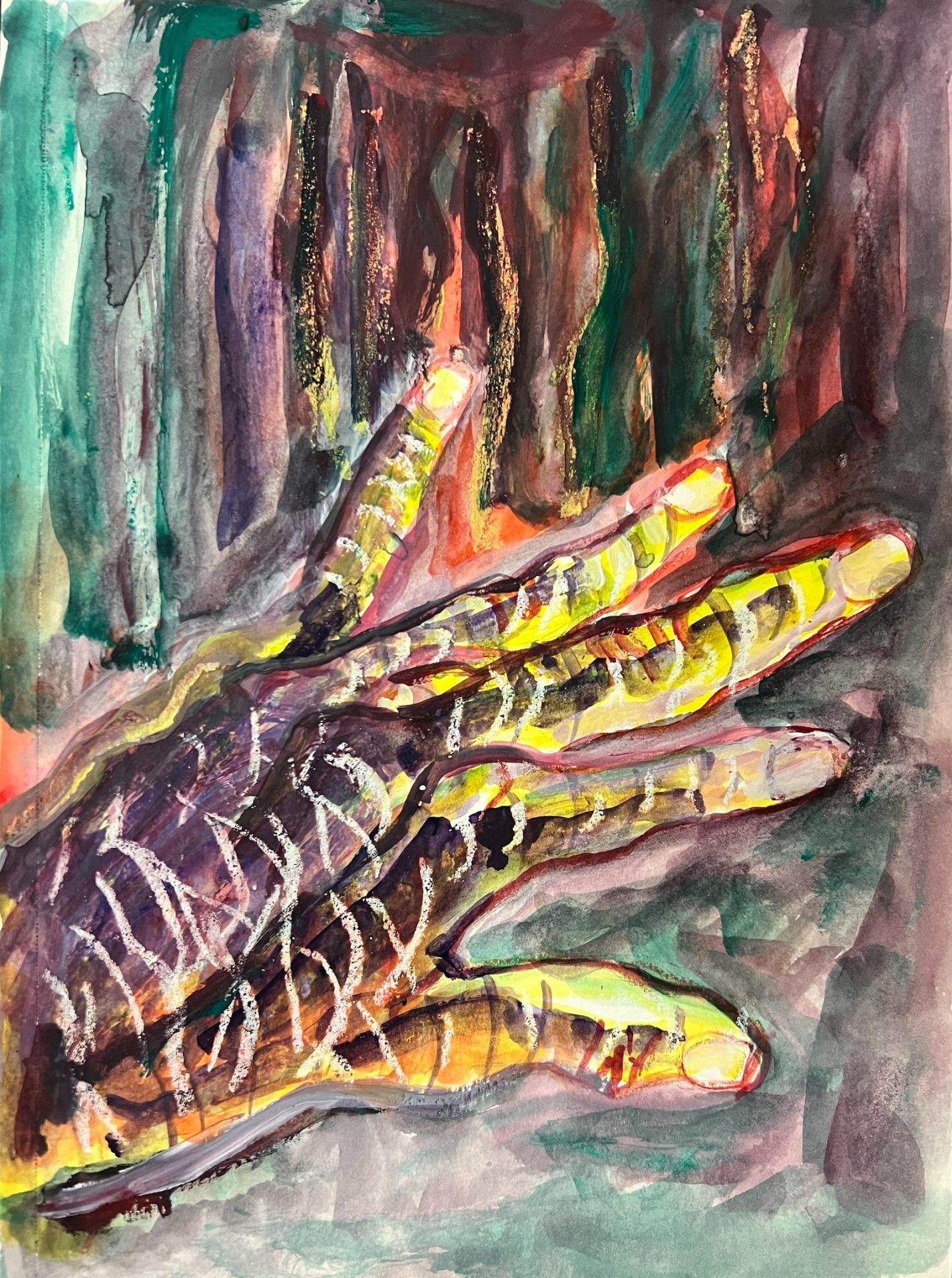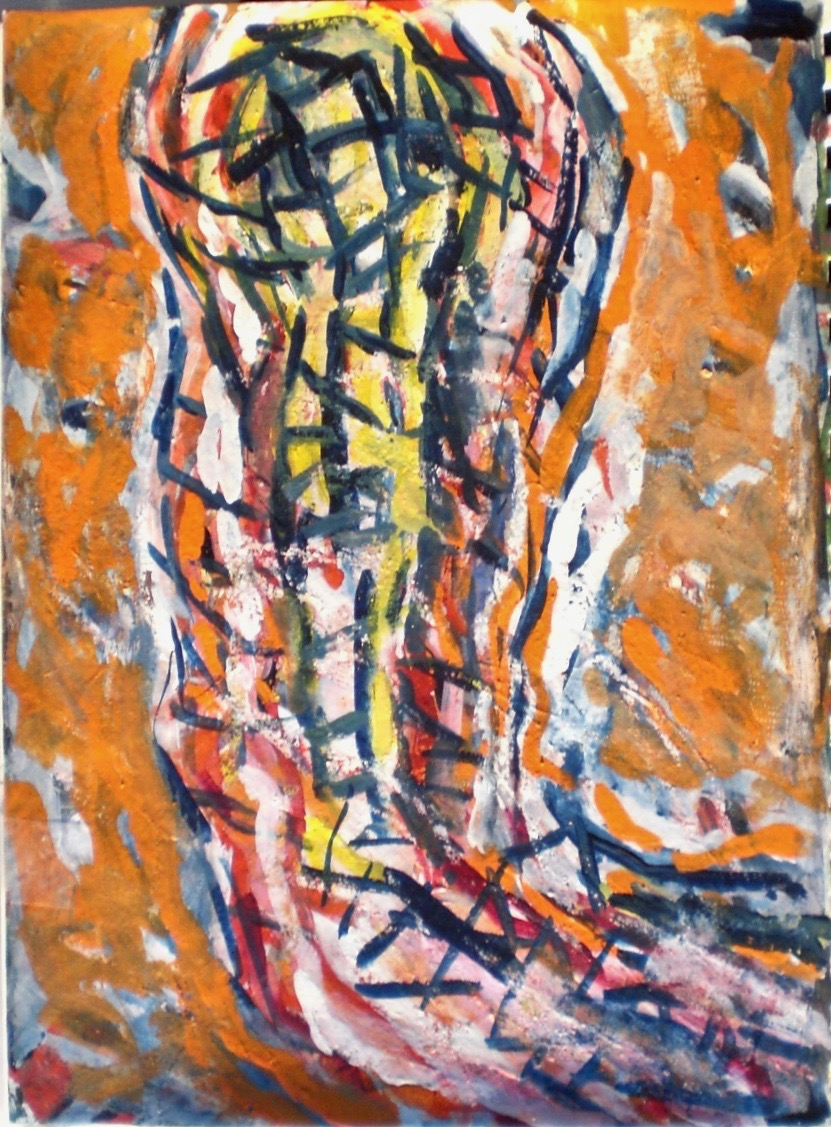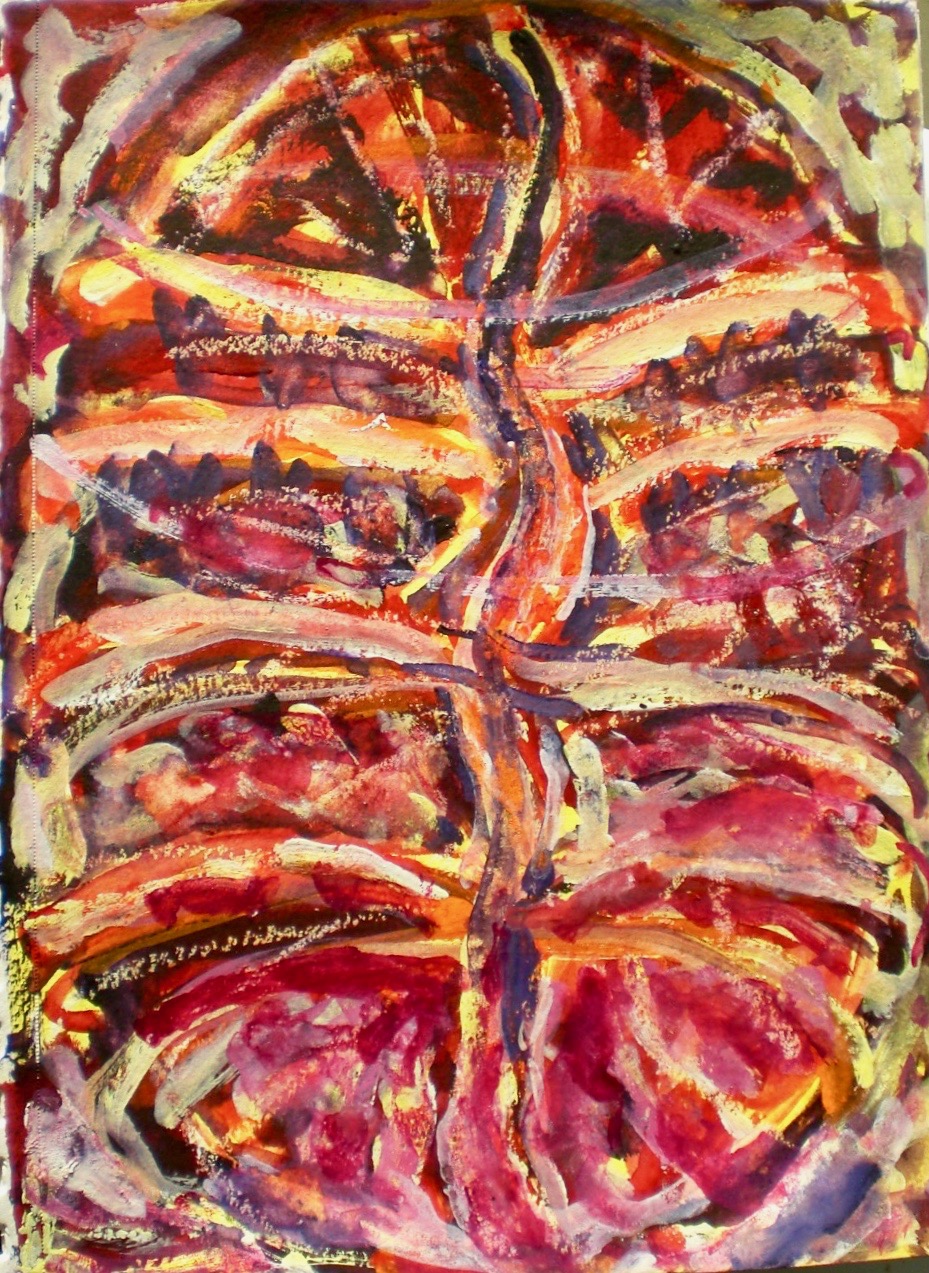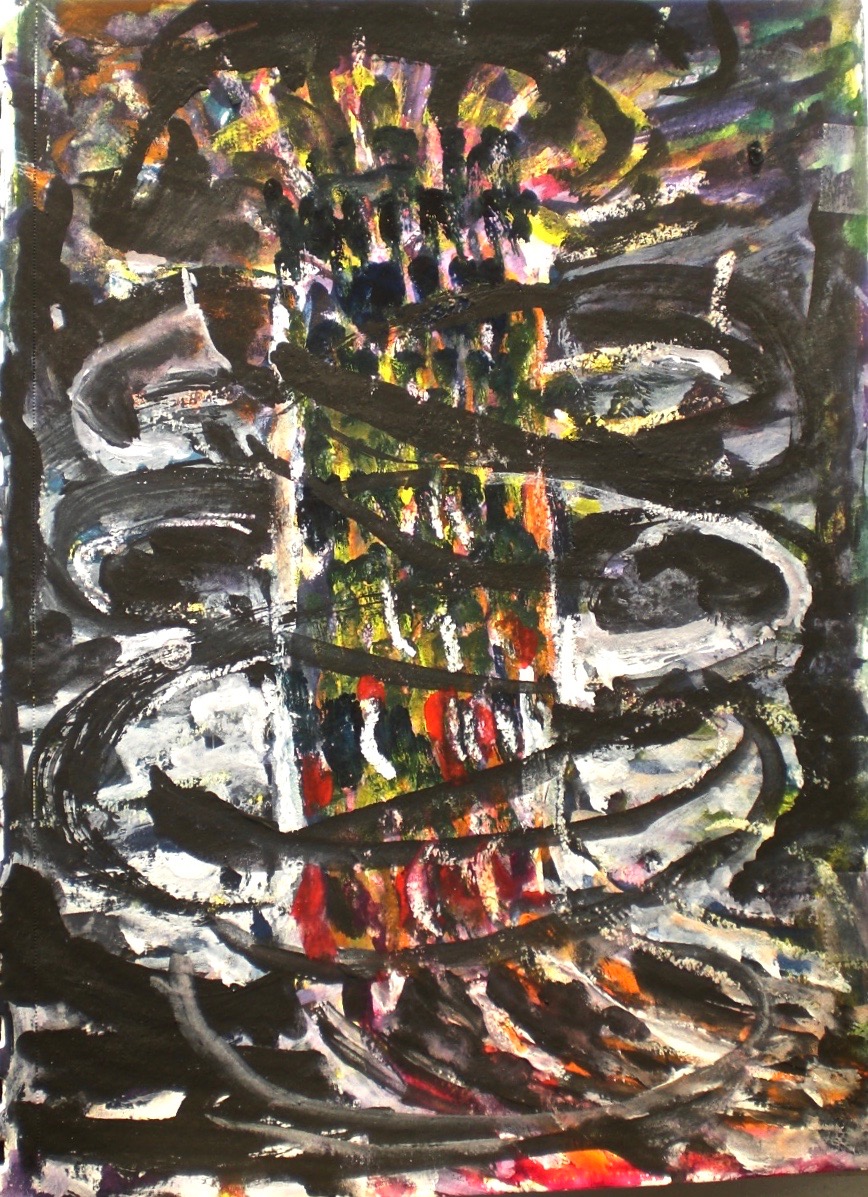MOBY DICK IN DAYS OF PESTILENCE AND CHAOS
Observation Deck Gallery
Opening: December 22, 2022
Closing: February 26, 2023
CAPTION: (above) Aileen Callahan, Contagion XLII Callahan, 2020.
In response to the COVID-19 pandemic, and working through the 2020 lockdown, Boston-based artist Aileen Callahan (b. 1941) created Moby Dick in Days of Pestilence and Chaos. This body of work explores themes of contagion and plague, and the known, the unseen, and the feared, as described by author Herman Melville (1819-1891) in the novel Moby-Dick (1851). How much time must pass before infection and chaos take hold—of a crew? —of a society? – and how do such questions apply to today?
In the 1700s and 1800s, ships entering port with sickness onboard – dubbed “Famine ships” being “foul and infected with any malignant or contagious disease” – had to quarantine for up to 40 days, passengers and crew were examined and isolated, and the vessel was thoroughly fumigated. Such vessels raised a ‘yellow flag” during the day and shone a light at night until it was safe to enter the port. In 1848 at Mahon, Spain, traveler Edwin Monague recorded how, “The abominable yellow flag, still marks our ship as ‘plague smitten.’ Every boat steers off from us afraid of contamination.” This “fear of contamination” is the focus of “The Jerobaum Story,” Chapter 71 of Moby-Dick.
When writing Moby-Dick, Melville was very aware of the dangers of plague and disease, especially at sea. He describes Elijah, a character “whose face bears the gruesome marks of contagion” in Chapter 19. But, it is the Jerobaum arrival that truly captures the terror of illness on ship. The crew learn of “a malignant epidemic on board” the Jerobaum that makes the captain “fearful of infecting the Pequod’s company.” The chapter is filled with prophecy, doom, and portent, with shipboard plague as a backdrop.
Callahan created this series of seventy watercolors derived from the theme of contamination and pestilence in “The Jerobaum Story.” She presents abstract images of plague close-up and as washing over and inside of the titular antagonist, Moby Dick, a great white whale. The material Callahan chooses – watercolor – does physical and metaphorical work in this series. Both water and illness “spread” and lack formalized bounds. Liquid watercolor washes in varied colors and shades of light and dark create backgrounds that convey the feeling and movement of the sea, its swells and fluidity. These backgrounds “hold” the enigma of illness in the foreground, symbolized by networks of contagion that dissolve at the edges, spiral outward, and extend threatening tendrils.
The images aim to engage histories of shipboard pestilence as referents in Moby- Dick, but also connect to today, where we find ourselves engulfed within an active and ongoing pandemic. The angles, swirls, and colors present the reality of pandemic, which shifts month to month, defines our physical and spatial movement, impacts personal and public health, and threatens everyday lives.





